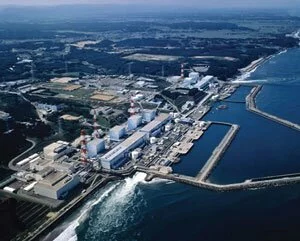
Japanese officials have been trying to prevent a meltdown at two major nuclear power plants whose emergency cooling systems were damaged by Friday's earthquake and tsunami.
The two major nuclear power plants, operated by the Tokyo Electric Power Company, are referred to as Fukushima No. 1 (Fukushima-Daiichi) located 150 miles northeast of Tokyo, and Fukushima No. 2 (Fukushima-Daini) located 7.1 mile south of its sister plant.
Fukushima No. 1 is suffering a meltdown, and it has been reported that radiation has leaked from the unstable Japanese nuclear reactor north of Tokyo on Saturday, an explosion has also blew the roof off the facility in the wake of the massive 8.9 magnitude earthquake.
It is believed that Fuel rods of the No. 1 reactor at the plant may be melting after radioactive Cesium material left by atomic fission was detected near the site.
Japanese officials have instituted an evacuation program around the area of the nuclear plants within a six mile radius, as cooling systems of the reactors had failed.
The cooling system must continually pumped water from a large pond that surrounds the core through a set of towers that keep the water at a safe temperature. Otherwise, the water will boil off, the fuel rods will melt, and there is a possibility that radioactive material will escape from the reactor's containment dome - a so-called meltdown.(kwch)
This latest situation follows a 8.9 magnitude earthquake which fueled a tsunami, both wreaking havoc on Japan's north-east coast, sweeping far inland and devastating a number of towns, villages, and farmlands.
Japan's Sendai's airport is now underwater, and planes and vehicles have been seen in a mangled mesh. Some roads are impassible because of massive cracks and debris. There is fear of water borne disease conditions spreading, and the fact that persons who have been displaced from the environs of the Fukushima's plant might be in such a position for a long period of time.